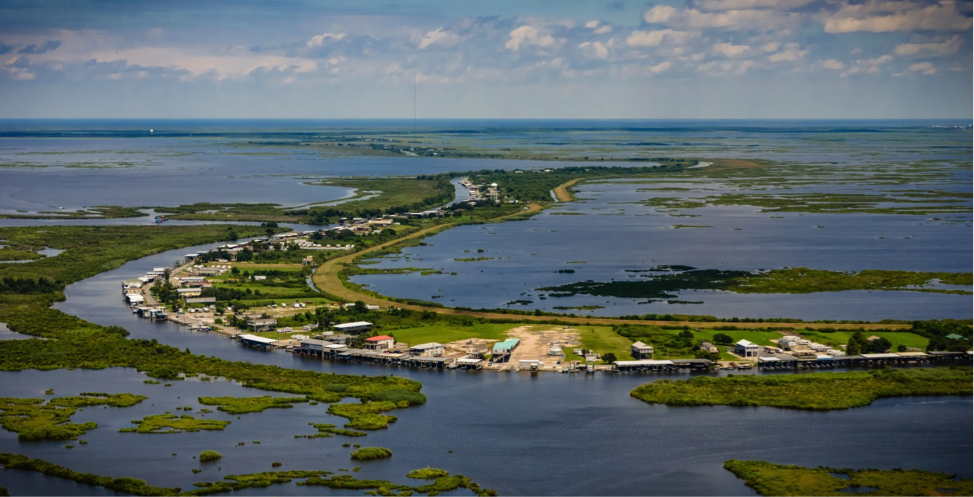Wetlands Then & Now: Wetland Conservation and Restoration Through the Years
Wetlands are an iconic ecosystem with a rich history. These unique landscapes cover a large portion of the Earth’s land surface but it’s taken many years for us to understand their true value. Centuries of human development and activity have transformed once pristine wetland landscapes into degraded, less than optimal ecosystems on the brink of collapse. In recent years, many have come to learn the true value of wetlands and their successful restoration is key to maintaining a healthy coastal ecosystem. However, the management and restoration of wetlands is very complex and represents a truly interdisciplinary effort to transform a landscape to its former condition. Let’s take a closer look at wetland restoration through the years.


Why Do Wetlands Matter?
Wetlands provide a range of ecosystem services that support healthy and vibrant coastal communities. These ecosystems are among the most productive in the world, comparable to rain forests and coral reefs. Wetlands play an integral role in the ecology of a watershed by slowing the release of stormwater into estuarine systems and improve water quality by allowing sediments and nutrients to settle out of suspension prior to entering the coastal zone. This buffer can prevent harmful algal blooms and reduce sediment loading to protect smothering of nearshore corals. These shallow water habitats support healthy vegetation growth and the development of organisms including fish, amphibians, and shellfish and serve as wading/breeding grounds for migratory birds. Wetlands also provide substantial flood protection. They act as natural sponges that trap and slowly release flood waters, rain, snowmelt, or groundwater that would otherwise inundate the coastal zone. The dense vegetation and dunes can act as natural barriers to minimize wave damage and storm surge.
Still, wetlands have not always been viewed in a positive light. During European settlement of the U.S., wetlands were generally perceived as dismal swamps that harbor mosquitoes, toxic substances, and disease. In 1900, the U.S. Supreme Court proclaimed that wetlands were “the cause of malarial and malignant fevers” and that the “police power is never more legitimately exercised than in removing such nuisances.” Many cities and towns were built on wetlands due to their flat area and otherwise useless land surface. Major cities such as Boston, San Francisco, and Washington D.C. were all built on top of historic wetlands and remnants of those landscapes can still be seen today.
What Are Wetlands?
Wetlands form an important link between land and water and serve as primary habitat for thousands of flora and fauna. Wetlands are distinct ecosystems flooded by water, seasonally or permanently, and support a wide range of vegetation adapted for life in saturated soil conditions. Marshes, bogs, swamps, shallow ponds, and deltas at the mouth of large rivers are all considered wetlands. However, the vast majority of North American wetlands are freshwater (95%) with 5% represented by various marine and estuarine wetland types (Dahl 2006). Wetlands can be found on every continent except Antarctica with global areal estimates within the range of 6-8 million square kilometers. Given that wetlands account for about 5% of the Earth’s land surface, a size just smaller than the 50 United States, chances are that you’ve passed through one before.



Due to rapid urbanization through the 20th century, the loss and degradation of wetlands in North America has been substantial. Historians estimate that there were approximately 221 million acres of wetlands in the U.S. (excluding Alaska). In the last 200 years, over 50% of wetland area has been lost and converted to non-wetland lands. About two-thirds of total wetland losses are due to the conversion to agricultural lands, in part because it is less costly than conversion to other land uses (e.g., urban). The quality of existing wetlands has also degraded due to human activities (e.g., logging, mining, construction, dredging) and natural causes (e.g., erosion, droughts, subsidence). In 2009, the lower 48 states contained an estimated 110 million acres of wetlands, an area about the size of California. The photos above showcase the extensive loss of wetlands in southern Louisiana from 1932 to 2011.
It wasn’t until the introduction of the Ramsar Convention on Wetlands of International Importance in 1971 (Iran) that wetlands were internationally recognized as important ecosystems in need of conservation. This intergovernmental treaty committed member countries to maintain the ecological character and preserve the sustainable use of wetlands in geographic locations around the globe. Since then, growing public concern in the states resulted in policy changes and new legislation that provided protection for wetlands. Policies such as the Clean Water Act of 1972 Section 404 and Executive Order 11990 in 1977 were responsible for the significant slowing of wetland conversion and losses for years to come. Recently, wetland restoration has become the focus of many national and international conservation strategies that target global resilience to climate change. Take a look below at some of the successful wetland restoration projects managed by CZM programs in recent years.
Examples of Wetland Restoration Projects
Hamilton Wetland Restoration Project, San Francisco Bay Area, CA
This restoration project is a collaborative effort between the U.S. Army Corps of Engineers, the California Coastal Conservancy, and the San Francisco Bay Conservation and Development Commission. The project, initiated in 1999, comprises approximately 2,600 acres of wetland area in the Whiteside Marsh section of the closed Hamilton Air Force Base. This ecosystem now represents a healthy natural estuary with tidal wetlands that support habitat for many endangered species in the San Francisco Bay Area.




Southern Flow Corridor Project, Tillamook, OR
A landscape-scale effort in Tillamook Bay, Oregon that reviatalized tidal wetlands for threatened salmon. Over the past 150 years, close to 90% of Tillamook Estuary tidal wetlands have been lost due to development and agriculture. Dikes and leveees impeded the natural flow of rivers and disconnected them from their historical floodplains. This corridor has seen frequent seasonal flooding leading to over $60 million in flood losses between 1960-2000. In 2016, NOAA Fisheries worked with community partners to reconnect 443 acres of marsh habitat and opened 13 miles of tidal channels for migratory fish.
Tidmarsh Restoration Project, Plymouth, MA
Since the early 1900s, Tidmarsh Farms was a commercial cranberry farm in Plymouth, MA. In 2010, about 200 acres of farmland was taken out of production and placed under a conservation easement through the USDA NRCS Wetland Reserve Program. Soon after, Mass Audobon purchased the property to establish a wildlife sanctuary on the grounds. In partnership with the MA Department of Fish and Game’s Division of Ecological Restoration (DER), and NOAA, the area was restored to its natural wetland habitat. Thousands of trees were planted, new flow channels were created, and dams were removed to connect floodplains back to their respective headwaters. Today, the wetland is thriving with new vegetation and wildlife and serves as a critical tool for educating the public about wetland conservation.




Indiana Dunes Daylighting Project, Chesterton, IN
An award winning project at Indiana Dunes State Park that restored Dunes Creek to a natural stream and wetland ecosystem after more than 80 years of channelization through a buried pipe. The process of “daylighting” involves the exposure of a buried stream to natural light. The two-phase project was completed in 2008. Phase I was funded by the Indiana Lake Michigan Coastal Program (LMCP) using NOAA Coastal Zone Management (CZM) funding and Phase II was funded by a $1.4 million American Recovery and Reinvestment Act (ARRA) grant. Since then, the restored stream and associated wetlands have provided tremendous protection from storm and coastal erosion.
